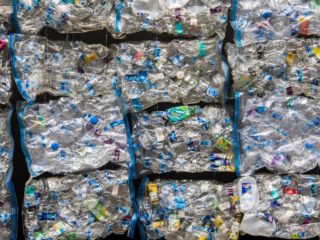There’s so much confusion about recycling that I thought it would be helpful to write about recycling myths and the solutions to these common misconceptions.
So let’s take a look at the most common ones and bust these recycling myths!
Myth: If I Put it in the Bin, It’ll Get Recycled
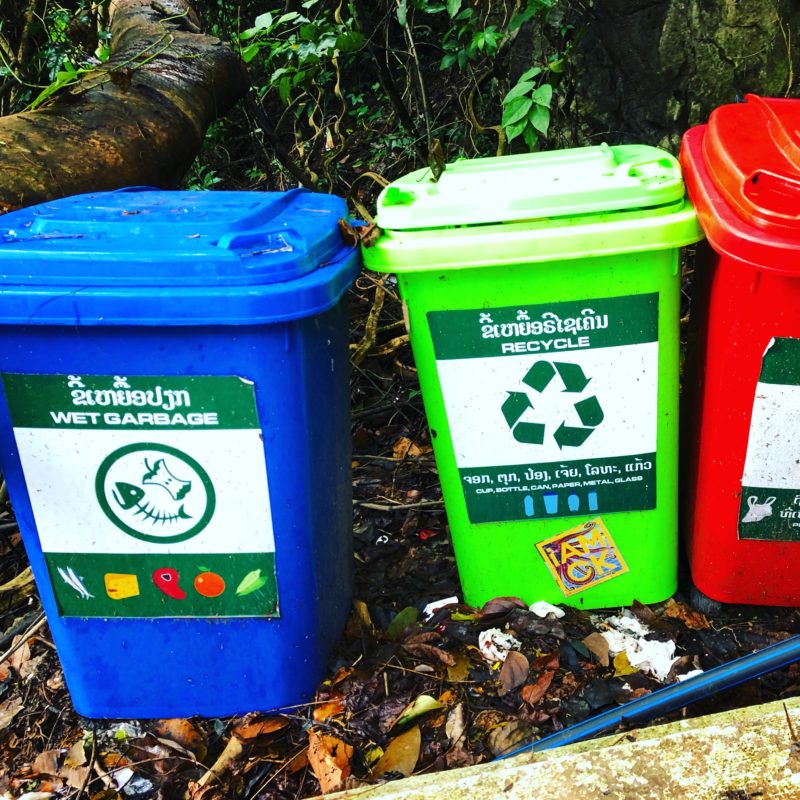
Does Recycling Work?
Most of us try to be environmentally conscious and reduce waste. We think that one major way to combat this increasing amount of waste is to recycle. It’s easy, right? One of these recycling myths is that we throw our recyclables in the appropriate bin and – poof! – they get transformed into shiny, new and useful products.
The problem is that it doesn’t really work that way. In fact, for a variety of reasons, many of those items (plastic ones, in particular) that you put in the bin don’t get turned into new products. Instead, they end up in a landfill or are incinerated.
What Can You Do?
This is one of the recycling myths that you can bust by spending a few minutes to educate yourself. The more you understand the process, the better you’ll be able to recycle right. Most importantly, work towards reducing the amount of waste you generate in the first place.
I believe that understanding this topic is so important that I’ve devoted an entire post to the recycling process. I hope you’ll take a moment to read it and learn the details.
Myth: Recycling is Complicated
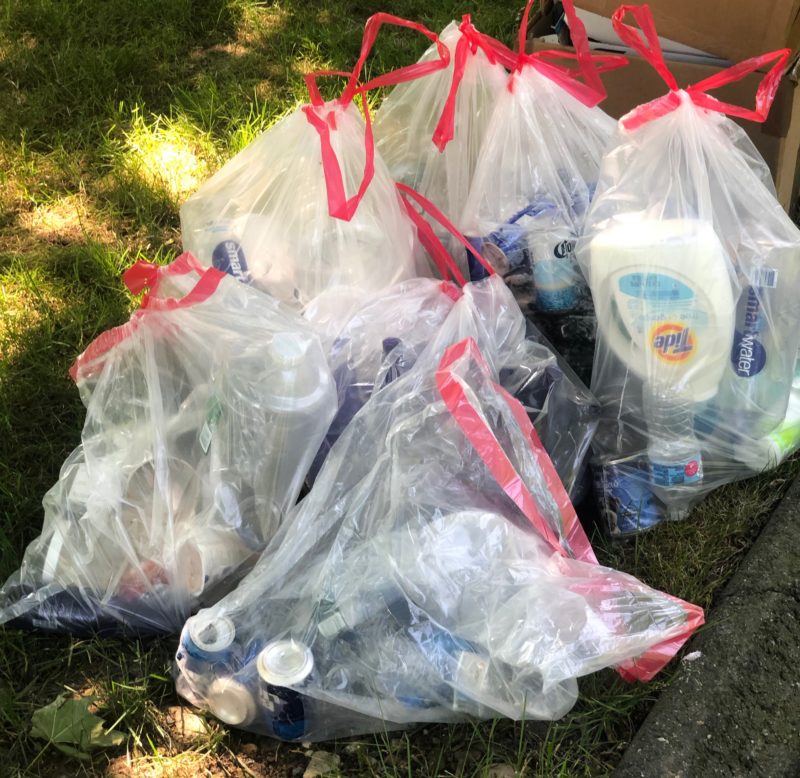
It’s true that the recycling process is complicated, but your recycling efforts don’t have to be.
The most important thing to do is first check your local recycling guidelines. Then take a few minutes to read my do’s and don’ts for a general overview of what can and can’t be recycled.
What Can You Do?
Do: Check your Local Guidelines First
Depending on where you live, there can be different recycling guidelines. Find out the specifics of your community’s recycling rules by checking your municipality’s website for your town or city’s specific guidelines.
Do: Clean All Items Before Recycling
This is the most important “Do”! Just a few dirty items in the recycling bin can potentially contaminate the entire bin. That bin then heads to the landfill instead of the recycling facility. Empty and rinse out containers. Check that paper is clean and dry.
Don’t: Recycle Extra Soiled, Wet Paper Items
Anything overly wet or soiled should be thrown in the garbage. This includes any paper products – paper towels, plates, napkins, tissues.
What about that greasy pizza box? As long as you remove excess pizza and cheese, it’s recyclable.
Don’t: Bag or Tie up Your Recyclables
Most recycling programs specify leaving recyclables in the bin untied and not bagged.
Film plastics (e.g., plastic bags) can’t be recycled with the regular recyclables as they often jam the machinery.
Do: Recycle These Items (in General)
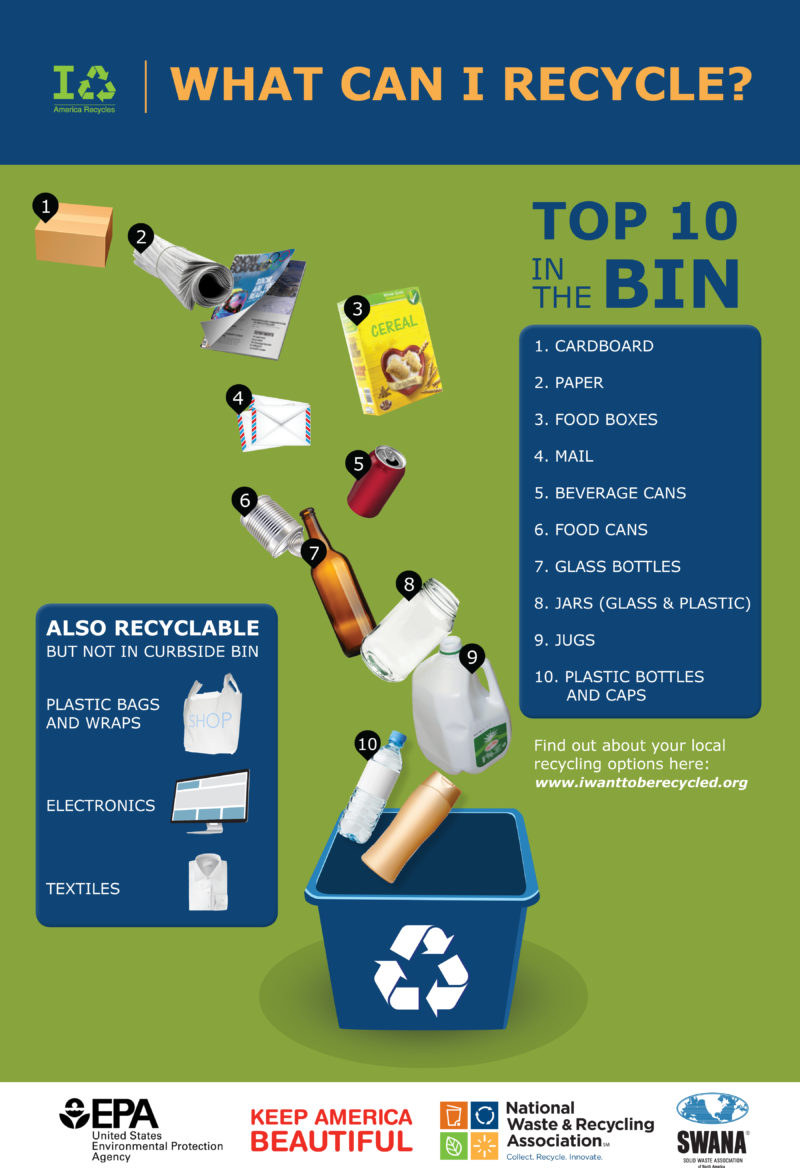
In general, according to the EPA, these items can be recycled in your curbside bin. As always, check with your local municipality or private recycling service:
- Flattened cardboard
- Paper, newspaper, magazines, paperboard
- Food boxes (clean!)
- Beverage cans
- Food cans
- Glass bottles
- Jars (glass and plastic)
- Jugs
- Plastic bottle caps (check your local guidelines)
Don’t: Recycle These Seemingly Recyclable Items
Check your local recycling guidelines for specific rules, but in general, these items are not recyclable in your curbside bin:
- Single-Use Plastics (See Recycling Myth #3 for more details)
- Disposable Coffee Cups. The plastic lids may be recyclable.
- Textiles (clothing, towels, sheets, blankets)
- Shredded paper
- Paper towels, napkins, tissues
- Non-container glass (e.g., drinking glasses, bowls)
Don’t: Recycle Hazardous Waste or E-Waste
See Section 3 of Green That Life’s Green Clean post for specifics on how to recycle most of these items:
- Paint
- Light bulbs
- Barometers, thermometers
- Pesticides, herbicides
- Batteries
- Aerosol cans
- Nail polish
- Electronics
When in Doubt….
Throw it in the garbage. It’s better to throw an item you’re unsure of in the garbage than risk contaminating an entire bin of recyclables.
Myth: You Can Recycle Any Plastic
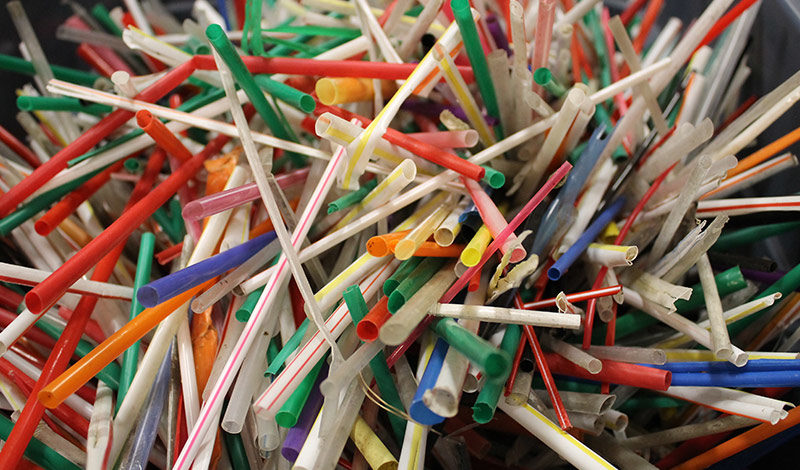
Familiarize Yourself With Plastics
This is one of the more popular recycling myths. Not all plastic containers can be recycled. The rule of thumb is the higher the number of plastic, the more difficult it is to recycle.
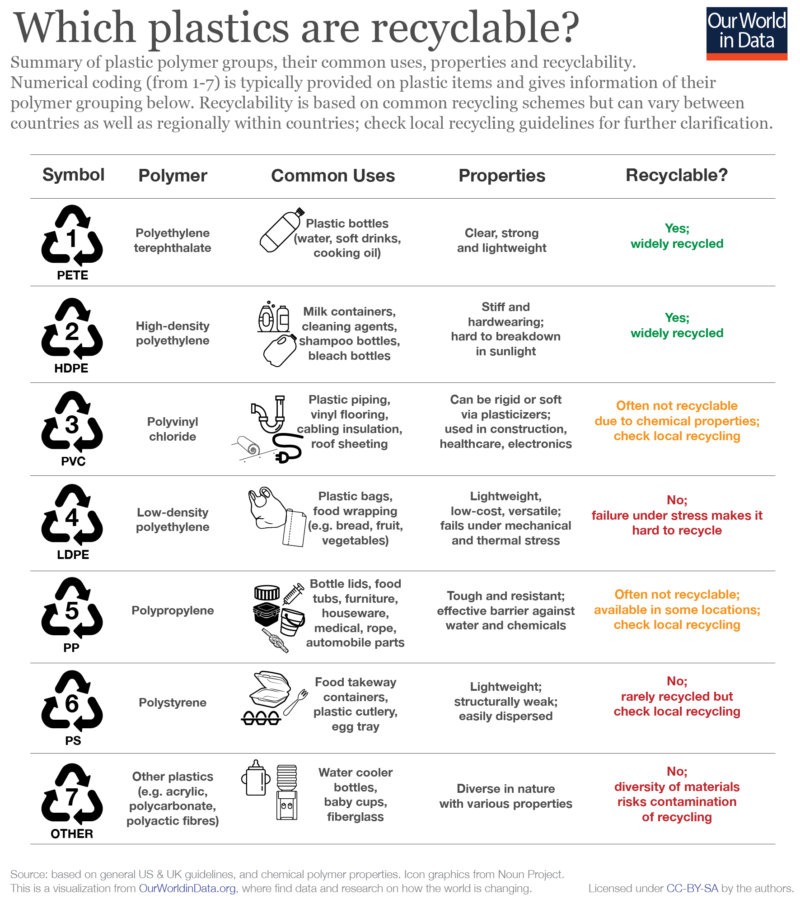
This excellent graphic by Our World in Data Organization provides a clear, visual summary of which plastics can and can’t be recycled. As always, double-check your local guidelines for any exceptions.
Single-Use Plastics Can’t be Recycled
What about single-use plastics, like plastic straws? Contrary to popular belief, you can’t recycle most single-use products made from plastic.
The sad irony is that most of these items are derived from a non-renewable resource (fossil fuels), used for a few minutes, and are then left in the environment virtually forever.
Do not place these single-use plastic items in the recycling bin:
- Plastic bags. These can be disposed of in many department or grocery stores. Search the Plastic Film Recycling Organization for locations near you.
- Plastic film (bubble wrap, cling film, bags)
- Some types of plastic takeout containers
- Styrofoam
- Plastic plates and cups
- Plastic straws, coffee stirrers
- Coffee pods
Compostable Plastics Can’t be Recycled
Bioplastics, as opposed to petroleum-based plastics, are derived from organic products and cannot be recycled with petroleum-based plastic recyclables.
Check with your local recycling company or town hall to see if there are any drop-off locations for compostable plastic. In most cases, if they’re certified compostable, they can be composted in a commercial compost facility.
Myth: Recycling is the Only Way to Reduce Waste
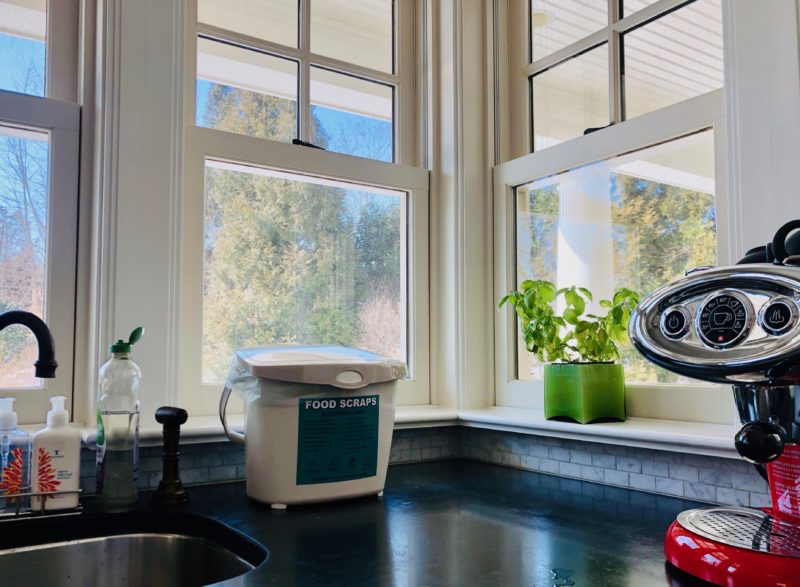
The Five (or Six) Rs
One of the biggest recycling myths is that recycling is the only way to divert items from the landfill. In fact, recycling should really be the last resort in reducing waste. What should you do instead? Here, in ascending order of impact, I outline the hierarchy of ways to reduce waste.
Recycle, but Recycle Responsibly
Understand the recycling process and read through this post to learn how to recycle right.
Reuse and Repair
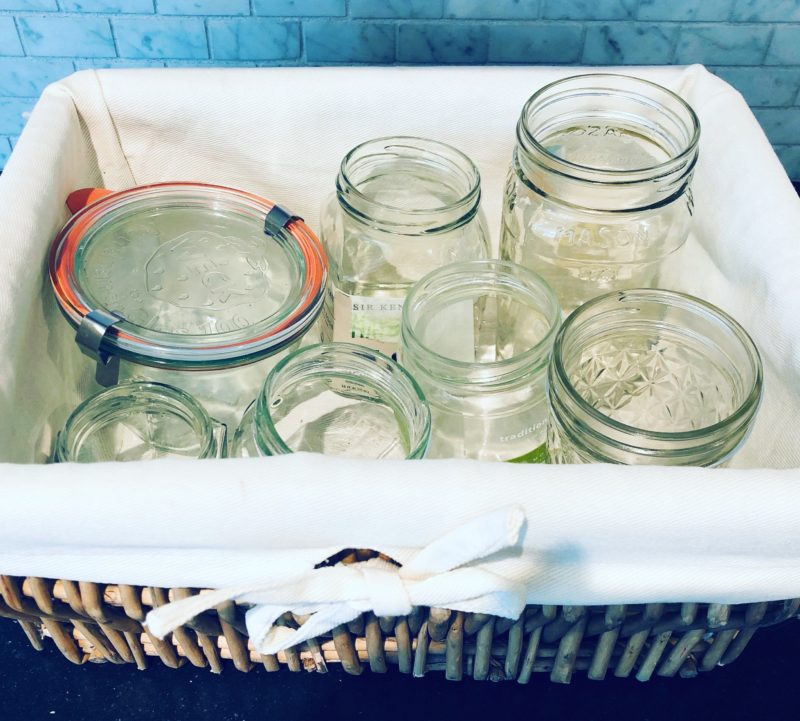
Reuse those long-lasting, items made from durable products (cloth, wood, metal, glass), such as reusable straws, bags, or containers.
For tips on how and what to reuse, see Green That Life’s post on repurposing, donating, and reusing unwanted items.
‘Rot’
In keeping with the ‘R’ theme, “rot” applies to composting, or food scrap recycling. This is an excellent way to divert food waste from the landfill and recycle it into nutrient-rich compost. For further reading, I cover the what and how of composting in my food waste post.
If you’re not ready to start composting, reduce the amount of food waste you generate by eating up those leftovers.
Reduce
Reduce your reliance on items – mainly single-use disposable ones – that generate trash, litter, and can pollute our environment.
Refuse
When you can, refuse single-use disposables and unnecessary packaging.
Rethink
My personal addition, as the top priority in reducing waste, is “Rethink,” as in rethinking how we live our lives and the lifestyle choices we make. The goal should be to minimize waste and reuse what he have as much as possible. Simple changes that we make to our everyday lives can have a big impact.
Myth: Recycling is a Fail. Let’s Stop Recycling.

Despite the problems associated with recycling, when done right, it can be one effective waste management tool. Recycling an item is always better than throwing it in the garbage. Also, keep in mind that while plastics can’t be recycled indefinitely, other materials, like paper, glass, and metal can be recycled over and over again.
Now that these common recycling myths have been busted, get out there and reduce that waste (responsibly)!







